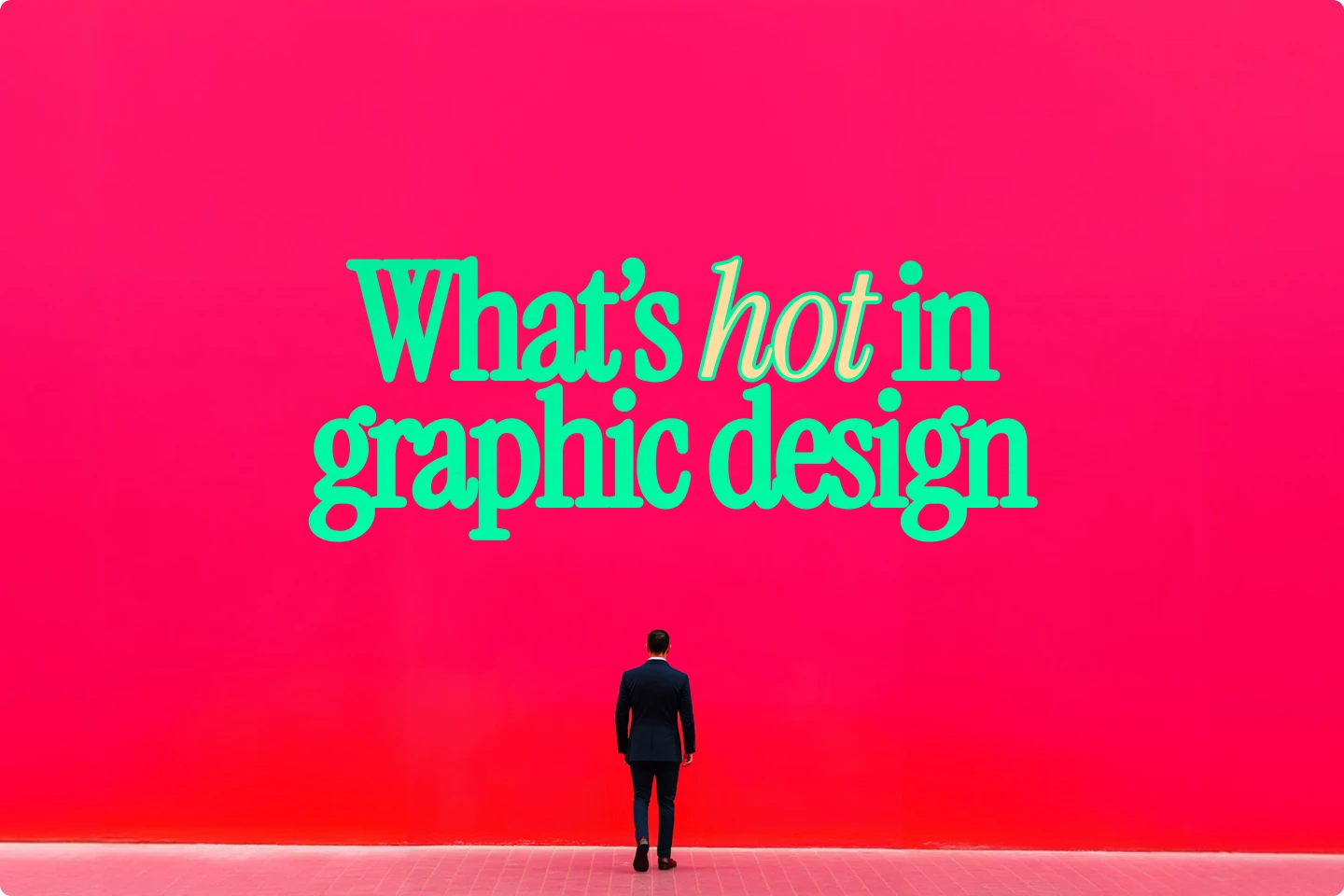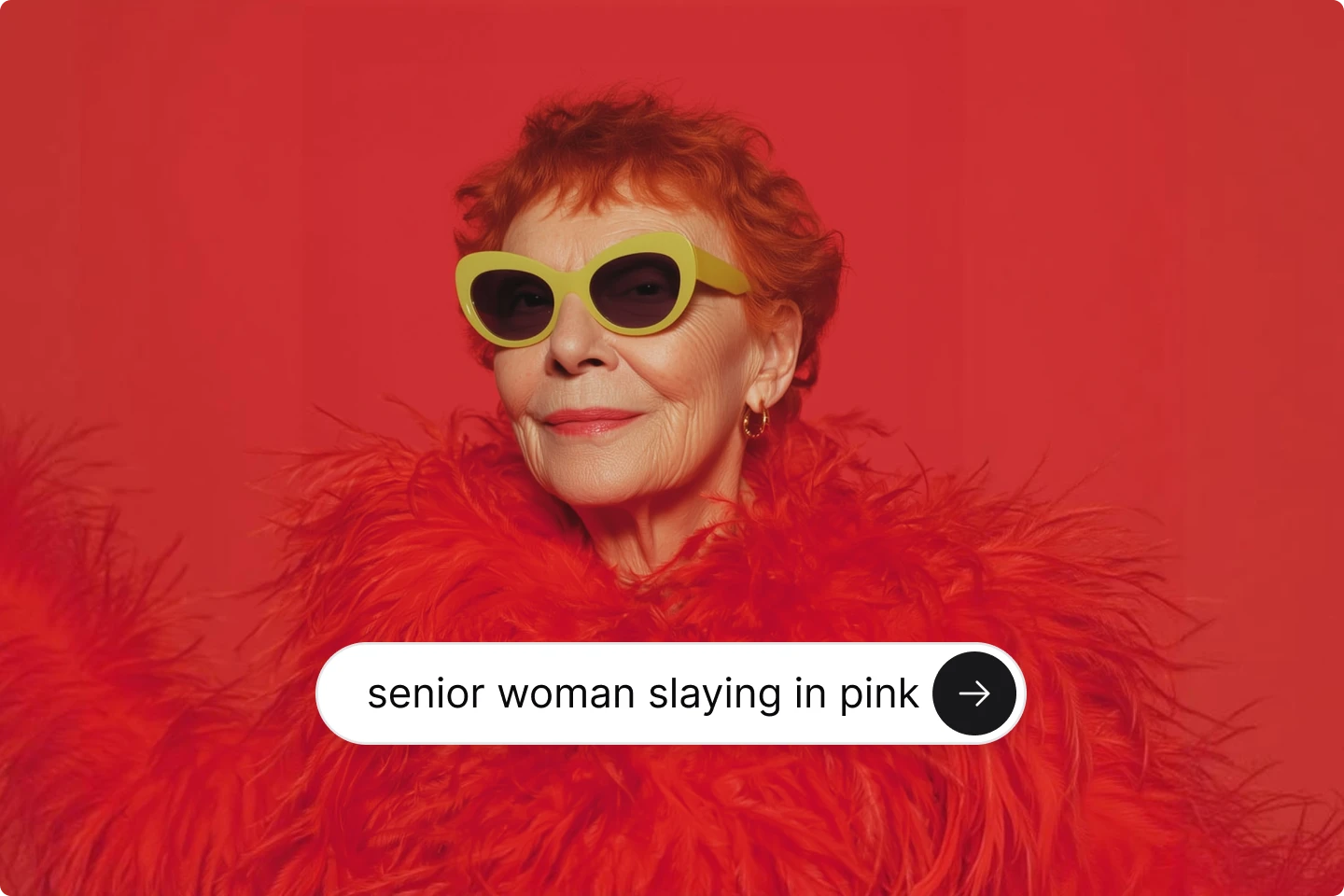Key principles to avoid ugly and bad design


We talk a lot about how to make your designs as beautiful and impactful as possible. But what about simply avoiding ugly design? We're here to cover that, too.
We’ve all seen design work that just doesn’t sit right. Maybe it’s a logo that feels off-balance, a webpage that overwhelms the senses, bad graphic design work that looks cringey, or a social media post where everything is shouting for attention. Bad design is everywhere, and it’s a major issue that needs addressing.
But what actually makes design "bad"? And more importantly, how do you avoid making something that is poorly designed?
The truth is, great design isn’t about using the fanciest software or following every trend. It’s about making intentional choices that serve a purpose. Whether you're building a brand identity, designing for digital platforms, or creating simple visual assets, avoiding a few key pitfalls can elevate your work from chaotic to cohesive.
That's why this post covers some of the most common design principles that, when ignored, can turn your project into a visual mess. Understanding these will help you make smarter, sharper, and more effective design decisions regardless of your skill lev el.
Why bad design hurts more than you think
Design is the framework that shapes how your audience interacts with your content, how they perceive your brand, and how much trust they place in your message.
When design choices fall short, the impact is immediate. Visual inconsistency, cluttered layouts, and poor use of white space can lead to confusion or frustration.
These types of graphic design fails are more than just aesthetic missteps. They can make your project harder to navigate, damage credibility, and even drive users away.
A brilliant idea might be completely overlooked if it’s hidden behind an overwhelming or poorly structured visual experience.
On the other hand, a user friendly design does more than just look good.
It enhances user experience by directing attention, improving comprehension, and supporting the message at every level. Clear typography, intentional spacing, and a smart layout all work together to ensure your design feels intuitive and accessible.
The key is to avoid common pitfalls before they sneak into your project. When you know what to look for, you can make smarter design choices that support your work. In the next section, we’ll explore eight design principles that are often misunderstood or ignored, and how to get them right to create a stronger overall user experience.
1. Disregarding visual hierarchy
Imagine opening a website and not knowing where to look first. There’s a headline, a call to action, a menu bar, three different buttons, and a paragraph all screaming for your attention at once. This lack of structure is a perfect example of poor visual hierarchy.
Visual hierarchy is the way you organize design elements to show their order of importance. Without it, users feel confused and overwhelmed, which means your message won’t land the way you intended.
How to fix it:
Start by identifying what matters most. Do you want the user to read a headline first? Click a button? Browse a gallery? Once that’s clear, use tools like size, weight, color, and spacing to guide the viewer's eye in a natural order.
Typography plays a big role here. Headlines should be large and bold, subheadings smaller but still prominent, and body text legible without drawing too much attention. You should also make sure your layout flows in a logical sequence that matches how people actually read (usually from top to bottom and left to right).
Quick test: Step back from your design or blur your screen slightly. Whatever pops out first is your focal point. If it's not what you intended, it's time to reorganize.
2. Using too many fonts
Typography and trending fonts are some of the most powerful tools in a designer’s toolkit, but it’s also one of the easiest to misuse. Nothing derails a design faster than throwing five unrelated fonts into the same layout. It not only looks chaotic but also confuses the message you’re trying to send.
Mixing too many typefaces can result in a disjointed and unprofessional feel. Instead of enhancing the message, it becomes a distraction.
How to fix it:
Limit yourself to two fonts per project—one for headings and one for body text. If you need more visual variety, use different weights and styles within the same font family. This maintains consistency while still allowing for emphasis and hierarchy.
Choose fonts that complement each other. For example, pair a serif font with a clean sans-serif for contrast. But make sure they align in tone. You wouldn’t want a playful handwritten script next to a formal slab serif unless that contrast serves a very intentional design goal.
Also, stay consistent across platforms. If you’re designing a brand system, the same typography rules should apply across your website, print materials, and social content. It helps create a cohesive experience for your audience.
3. Poor color choices
Color trends and color schemes might be the first thing people notice about your design, which makes it one of the most important elements to get right. Unfortunately, it’s also one of the most commonly misused.
Bad color choices can hurt readability, make it hard to effectively communicate your message, and turn users away before they even read a word. Whether it’s harsh contrasts, clashing hues, or weak contrast between background and text, poor color usage is a surefire way to downgrade your work.
How to fix it:
Start by building a color palette with intention. Choose a primary color that reflects the tone of your project (energetic, calm, bold, etc.), then pick supporting colors that enhance it rather than compete with it.
Make sure there's enough contrast between text and background. Light gray on white might look clean at first glance, but if people can’t read it without straining their eyes, it’s a problem.
Test your color choices in different lighting conditions and on multiple devices. And always think about accessibility. Design should be inclusive, which means your palette should work for people with color blindness or other visual impairments. Tools like WebAIM and contrast checkers can help you meet accessibility standards.
4. Cluttered layouts
We’ve all seen designs that try to do too much at once. Every inch of space is filled with text, icons, colors, and images. Instead of guiding the viewer’s eye, the layout overwhelms them.
Clutter goes beyond a visual issue and often turns into an experience issue. It makes it harder for your audience to understand the purpose of your content.
How to fix it:
Whitespace, also called negative space, is your best friend. It gives elements room to breathe and creates natural groupings that improve flow and readability. Don’t be afraid to leave areas intentionally blank.
Ask yourself: does every element on this page serve a purpose? If the answer is no, consider removing or simplifying it.
Use grids and consistent spacing to maintain structure. Stick to a modular layout where each section has a clear beginning and end. This will help viewers absorb information without feeling overwhelmed.
Remember, clarity beats cleverness every time.
5. Inconsistent alignment
Alignment issues might seem small, but they have a big impact on how polished your design feels. Even if a viewer can’t identify what’s wrong, they’ll feel that something is off.
Misaligned elements can make your work look amateurish and untrustworthy. Whether it’s buttons that don’t line up, text that floats awkwardly, or icons that aren’t centered, inconsistency breaks the flow of your layout.
How to fix it:
Use alignment tools in your design software to snap elements into place. Create consistent margins, and use guides or grids to organize your content.
Keep your text blocks and images aligned with each other. If you center some items but left-align others, the layout can start to feel unbalanced.
Also, pay attention to spacing. Uneven padding or inconsistent spacing between sections can be just as distracting as misalignment. Taking the time to get the details right pays off.
6. Neglecting readability
A beautiful design means nothing if people can’t read what it says. Readability isn’t just about font choice. Instead, quality readability includes font size, spacing, contrast, and content layout.
Designers often get caught up in aesthetics and forget that the primary purpose of most visual communication is to be understood.
How to fix it:
Use a font size that is easy to read, especially on mobile. Avoid putting long paragraphs in narrow columns or wide stretches of text across a full screen.
Adjust line height (also called leading) so lines of text don’t feel too cramped. Proper spacing between letters (tracking) and words also improves legibility.
Consider the medium. What works on a billboard won’t work on a mobile screen. Test your design at different sizes and on different devices to make sure it holds up.
If in doubt, prioritize clarity over creativity.
7. Overusing effects and trends
It’s tempting dive into the latest motion graphics trends or throw in flashy animations, gradients, shadows, or glitch effects because they’re trendy. But just because something is popular doesn’t mean it belongs in your design.
When effects are used carelessly, they can feel gimmicky or dated very quickly. Worse, they can distract from your core message.
How to fix it:
Use design trends as inspiration, not as a crutch. Before applying a new effect, ask yourself: does this support the content? Or is it just decoration?
Keep effects subtle and purposeful. A light drop shadow can add depth, but a heavy outer glow on every element just creates noise.
Your design should feel timeless, not trendy for the sake of it. Trends fade, but clarity and usability are always in style.
8. Ignoring the user experience
Finally, one of the biggest mistakes designers make is forgetting about the person on the other side of the screen. Good design goes beyond pretty visuals and turns into something more about guiding the user, creating connection, and making interactions intuitive.
If your layout is confusing, your navigation is clunky, or your forms are hard to fill out, it doesn’t matter how stylish your visuals are.
How to fix it:
Design with empathy. Put yourself in your audience’s shoes and walk through your project like a first-time user. Is it obvious what action they should take? Can they find the information they need?
Conduct user testing when possible. Watch how people interact with your design and take notes on where they get stuck.
Also, prioritize accessibility and usability from the start. A design that looks great but doesn’t function well creates frustration, not engagement.
Think beyond aesthetics and focus on experience. That’s where truly great design lives.
Great design comes from thoughtful choices
Bad design doesn’t happen because people lack talent. It usually happens because they rush, overlook the basics, or don’t take time to edit.
The good news is that bad design is completely avoidable. By focusing on visual hierarchy, typography, color, layout, alignment, readability, restraint, and user experience, you set yourself up for better results every time.
You don’t need to be a seasoned art director or a master of design theory. You just need to be intentional. Make choices that support your message, keep things simple, and always consider your audience.
So whether you’re creating a website, a design blog, a logo, or a social graphic, these 8 principles can help you steer clear of the pitfalls that make design ugly or ineffective.
The only design blogs you'll need in 2025


.webp)



